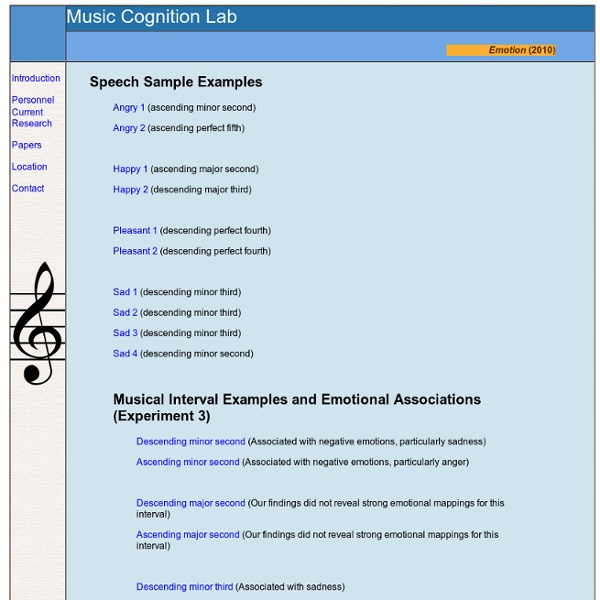



Logical Fallacies: The Fallacy Files Harmonic Progressions | Learning and Loving Music Theory - StumbleUpon Kelvin, You actually caught a mistake on the roman numerals! Thanks, I’ll have to fix that. The first and last chords of the progression are not 7th chords. Somehow I inadvertently typed “I7″ on the first chord of all the major keys. In the classical tradition, for the sake of stability, the first and last chords of a circle-of-fifths progression are usually triads, not 7th chords. Harmonic Sequences Part 2 In the jazz tradition all chords usually are 7ths, in which case the progression will start and end with 7th chords. Thanks again for your interest and input.
Otomata - Online Generative Musical Sequencer 16 Jul 2011 Click on the grid below to add cells, click on cells to change their direction, and press play to listen to your music. Update: Click here to get Otomata for your iPhone / iPod / iPad! Official facebook page: Also this reddit page has many examples: And there is a subreddit for Otomata: Otomata is a generative sequencer. Each alive cell has 4 states: Up, right, down, left. at each cycle, the cells move themselves in the direction of their internal states. This set of rules produces chaotic results in some settings, therefore you can end up with never repeating, gradually evolving sequences. If you encounter something you like, just press “Copy Piece Link” and save it somewhere, or better, share it! Here is something from me to start with: And here is an action video: Here are replies to some common questions: Q: MIDI Output?
(montalk.net) Research Notes: Tuning Forks and Megalithic Technology 05/11/2010 ↳ science Officially, tuning forks were invented in 1711 by John Shore, a British Musician. Unofficially, their existence traces back to ancient Celtic and Egyptian times. Nowadays they are used mainly for testing hearing, tuning musical, keeping time in a quartz watch, and teaching the principles of vibration and resonance in the classroom. The alternative health community uses tuning forks for healing purposes. But what did the ancients use them for? First consider this photo of the Abernethy Pictish Stone in Perthshire, Scotland: There you clearly see a tuning fork and hammer. To the right of the fork is what looks like an anvil, ax-head, or horn. A horn loudspeaker is a complete loudspeaker or loudspeaker element which uses a horn to increase the overall efficiency of the driving element, typically a diaphragm driven by an electromagnet. It’s also worth mentioning that this stone is positioned right in front of a round stone tower. Sonic Drilling is length of rod (m)
Forums : Off-topic Discussion : Music Theory- The basics... Introduction Hello there, you may have seen me around The Escapist and most know me as The Rockerfly, I am a musician. I have been playing music for about 10 years and have been writing for 3 years. Now to write music it is useful to have theory however it is NOT essential to writing music however it is useful if you to progress and write things out of your comfort zoneI know it is hard to know where to start with the theory and I find writing this article very difficult so please excuse me if you feel that I have not written it to your standards, every musician has been taught differently so their theory will be different Now introductions are over here are the basics of writing the harmony of a music piece and how to write the lyrics To learn there are, keys, chords, cadence, melody, how to change keys, keys you can go into, writing lyrics, rhythm, texture and writing in certain styles Reading Sheet Music I believe I may have missed out some content. Which, translates to this on a guitar
Phosphorescent - "Song for Zula" (Live at WFUV) "In Defense of Smokers", by Lauren A. Colby / Table of Contents